Matador Network's Blog, page 1243
October 11, 2018
Best solo female traveler places

Those dreams of throwing caution to the wind and jumping on a plane to somewhere far away on your own might actually be more realistic than you thought. According to research from Ampersand Travel, an increasing number of women are packing their bags and heading off, without the bother of waiting for anyone else to join. Solo travel is also an exercise in both self-confidence and trip-planning skills, and women are leading the charge, with Ampersand’s blog citing a study from George Washington University showing that almost two out of three travelers today are women.
Ampersand recently launched what they’ve dubbed the Wander Women Index, a ranking of the best destinations for solo female travelers. Factors used to determine the ranking include safety, women’s rights, food, culture, and Instagrammability.

Photo: Ampersand Travel
Click here to see a zoomed-in version.
Japan placed first in this ranking of the best destinations for solo female travelers, followed by France, Spain, and the US. The Japanese islands ranked high atop the list of most Instagrammable places and also scored well for safety and culture. Indonesia placed fifth, with Italy, Australia, and Canada also in the top 10. Perhaps most surprising is the seemingly low ranking of traditionally popular tourist hubs like The Netherlands (29) and Costa Rica (31).
All on the list offer ample reasons to visit, with the one undeniable takeaway being that your bucket list just got a heck of a lot longer. 
H/T: Ampersand Travel

More like this: The founding mothers of the solo female travel movement
The post This study shows the best destinations for solo female travelers appeared first on Matador Network.

Trick-or-treating could lead to jail

If you were hoping to throw on an old costume this Halloween and relive your childhood, you might want to think twice. According to several towns’ bylaws, it’s illegal to go trick-or-treating if you’re over the age of 12, with some pretty severe consequences. In Chesapeake, Virginia, anyone 13 years or older, dressed in a costume seeking candy, could be fined up to $100 and thrown in jail for six months. It also states that anyone, regardless of age, engaging in door-to-door solicitation after 8:00 PM would also be subject to a fine as high as $100, and up to 30 days in jail.
The official city code reads as follows:
Sec. 46-8. – Trick-or-treat activities.
(a) If any person over the age of 12 years shall engage in the activity commonly known as “trick or treat” or any other activity of similar character or nature under any name whatsoever, he or she shall be guilty of a misdemeanor and shall be punished by a fine of not less than $25 nor more than $100.00 or by confinement in jail for not more than six months or both.
(b) If any person shall engage in the activity commonly known as “trick or treat” or any other activity of similar character or nature under any name whatsoever after 8:00 PM, he or she shall be guilty of a misdemeanor and shall be punished by a fine of not less than $10 nor more than $100 or by confinement in jail for not more than 30 days or both.
(Code 1970, § 17-13.1; Ord. of 10-26-70)
Other cities in Virginia, like Norfolk, Newport News, Portsmouth, and Suffolk, have similar punishments for children over 12. Newport News’ city code goes one step further, adding that “no accompanying parent or guardian shall wear a mask of any type.”
While the law does sound incredibly strict, its purpose is to keep kids safe during trick-or-treating, preventing more mischief-prone teens from sharing the streets with youngsters. 
H/T: BuzzFeed

More like this: The 9 most epic places around the world to party this Halloween
The post Trick-or-treating over the age of 12 could get you sent to jail appeared first on Matador Network.

What to do in Chicago in fall

Chicagoans like to joke that fall lasts approximately two weeks. The time between the last 80-degree day early in October, and a snowy, bitterly cold day later in the month can really seem like it’s all we get. In reality, though, most years we do get a nice chunk of autumn weather — we just have to bundle up for a lot of it. Fall in Chicago is a wonderful time of the year, so layer up and get out there because there’s a lot to do. Here are our recommendations for what to do on a fall afternoon in Chicago.
1. See the fall foliage.
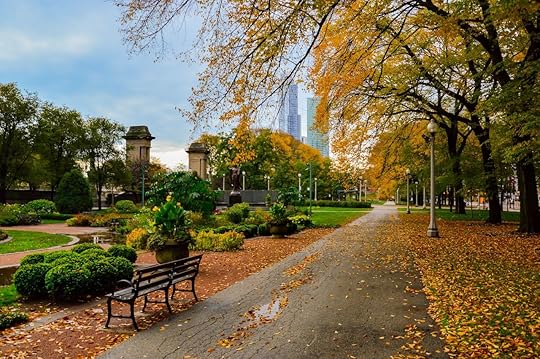
Photo: DiegoMariottini/Shutterstock
Pretty much everyone’s favorite fall activity all over the world is getting out and enjoying the beautiful reds, golds, and oranges that explode from the trees at this time of year. A big city isn’t always the best place to see it, but Chicago’s plentiful parks actually make it an ideal city to see the colors change.
The top places to see fall foliage in Chicago are at the parks along the lakefront where the stunning blue of Lake Michigan provides a nice contrast with the colors of autumn. The parks along the Historic Boulevard system are also great, as is the area near the lagoon in Humboldt Park and the Japanese-style Garden of the Phoenix in Jackson Park on the South Side. If you want to immerse yourself even more in the trees, head to one of the city’s forest preserves, most of which are located on the far northwest side.
2. Visit Christkindlmarket.

Photo: Christkindlmarket Chicago/Facebook
Later in the fall as the holiday season begins, check out the Christkindlmarket at Daley Plaza right in the heart of the loop. This open-air market comes from an old German tradition and it’s a great place for families, groups of friends, and couples. Stop by to do a bit of holiday shopping, see the city’s iconic Christmas tree, listen to music, enjoy seasonal foods, and have either a hot chocolate, hot apple cider, glass of wine, or a German beer. The Christkindlmarket is open every day from the Friday before Thanksgiving until December 24th.
3. Go to a football game.

Photo: Chicago Bears/Facebook
Few things say fall in the US like football, and in Chicago, we’re passionate about it. Our professional team, the Chicago Bears, play just eight home games per year, but if you’re around for one of them you should definitely try to get tickets. Chicagoans love our Bears no matter how bad they get, and the atmosphere in the stadium is incredible. If you go, be sure to head to the parking lot before to do some tailgating, that wonderful US tradition of throwing a giant barbeque in the parking lot before a sporting event. If you don’t score a parking pass and drive yourself, you’ll have to try to make some friends out there, but even just walking through it and witnessing how seriously people take the tradition is an experience in itself.
4. See a Bulls or Blackhawks game.

Photo: United Center/Facebook
Fall is a good time to cram in outdoor activities before the Chicago winter sets in, but sometimes the weather just doesn’t cooperate. For those days, head to the House That (Michael) Jordan Built, otherwise known as the United Center. Both the Chicago Bulls (basketball) and the Chicago Blackhawks (ice hockey) play their home games here and seeing either one is a great way to spend a chilly fall afternoon or evening. If the team isn’t playing well, it’s usually cheapest to buy tickets from scalpers on the street outside of the game, especially on a weeknight.
5. Go apple picking.

Photo: County Line Orchard/Facebook
Yeah, it’s a cliche, but apple picking in the fall is also a lot of fun. While there are no orchards in the city, there are dozens of them within an hour’s drive. Depending on what part of the city you stay in and the traffic at that time of day, the closest one could be in any direction so check the GPS map. If you’re going with kids (or looking to get in touch with your inner one), visit the County Line Orchard in nearby Hobart, Indiana for the full fall experience. They have apple picking, a pumpkin patch, corn maze, bakery, petting zoo, and live music on weekends.
6. Escape the city.
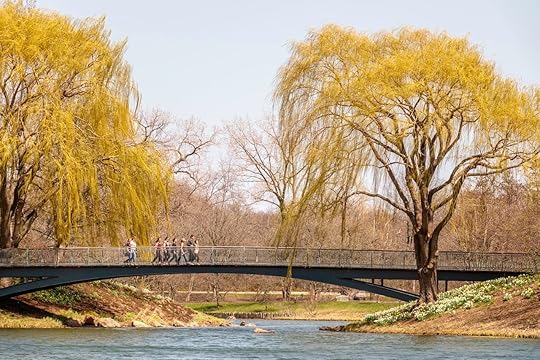
Photo: Ken Schulze/Shutterstock
As nice as the fall foliage can be in the city locations we mentioned earlier, nature is just better outside of the city pretty much anywhere in the world. If you’re willing to drive a few hours, you can find some incredible autumn leaves on the bluffs over Lake Michigan in Door County, Wisconsin; along the Mississippi River in Galena, Illinois; and in the rolling hills west of Madison, Wisconsin. If you want to stay within an hour of the city, check out the waterfalls and canyons of Starved Rock State Park, the dunes at Indiana Dunes National Lakeshore, or the wonderful landscapes of the Chicago Botanic Garden.
7. Own the F out of fall.
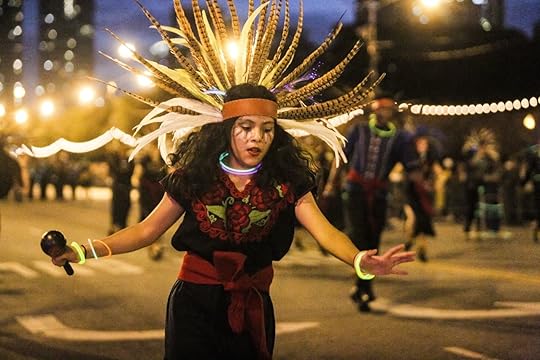
Photo: Arts in the Dark
Our final suggestion on how to enjoy fall in Chicago and stick it to the autumn haters is to just unapologetically enjoy the season. Kick it off with the Arts in the Dark Halloween parade on Saturday the 20th and celebrate the spectacle of floats, puppets, and performances from a vast wealth of local talent. With the Art Institute of Chicago, the Lookingglass Theatre Company, and programs such as After School Matters all contributing, it’s quite an event. Enjoy the drama with a backdrop of the skyline and be sure to dress up for the occasion, haters be damned! Enjoy every second of fall because winter is coming. 

More like this: 9 amazing things to do in Chicago that you won’t find in a guidebook
The post 7 perfect things to do on a fall afternoon in Chicago appeared first on Matador Network.

Amtrak’s sale ends tomorrow

If you’re still game for an amazing autumn train ride, now is the time to book because Amtrak has you covered with insanely low fares. You can ride from Chicago to St. Louis for just $13; enjoy the coastal views from Los Angeles to Oakland for $39; get some international flavor on a New York to Montreal trip for $49; or even take the 35-hour journey from Seattle to Los Angeles for just $79. The sale is valid for travel between November 27th and May 22nd, with no blackout dates. Yep, that includes Thanksgiving and Christmas, so get booking.
While flying might be more efficient, all of Amtrak’s routes are over 30 percent off, with amenities you just can’t get on flights. All trains include free Wi-Fi, two free carry-ons, and two personal items, and small pets (up to 20 pounds) are allowed on trips under seven hours. And the best part — which seems to have been specifically designed for autumn leaf-viewing — is that trains now offer special Sightseer Lounges above the cafe cars. These are observation areas with unassigned seats, where you can get an elevated view of the countryside.
There’s not much time to take advantage of the sale as it ends Friday, October 12th. To take advantage of this crazy sale before it’s too late, check out Amtrak’s booking site. 
H/T: Condé Nast Traveler

More like this: The 11 most beautiful train stations around the world
The post Amtrak is having a crazy sale and there are no blackout dates appeared first on Matador Network.

October 10, 2018
Coastal Pacific Railway reopening
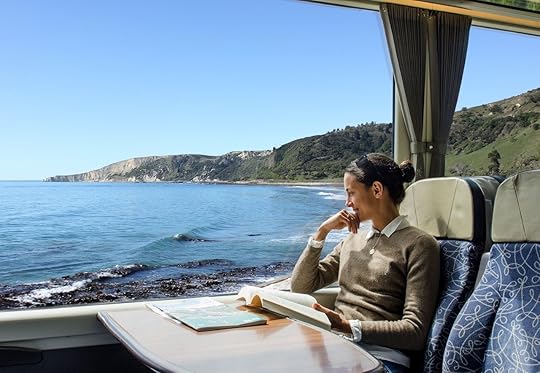
Traveling New Zealand by train is about to get a whole lot sweeter — or rather, return to its former glory. On December 1, the country’s iconic Coastal Pacific passenger rail route will reopen to the public, reinstating a popular rail expedition that runs along the South Island’s eastern coast from Christchurch to Picton.
The Coastal Pacific railway has been closed ever since the Kaikoura earthquake devastated the island nation back in 2016. After extensive maintenance and repair work, the line was reconnected in August 2017, but it has taken until now for workers to clear the tracks of mudslides and other debris left in the quake’s wake.
The Coastal Pacific passenger route can be done as a day-long round-trip voyage departing and ending in Christchurch, or you can hop off at Picton and catch the Interislander Ferry to the North Island. The trip takes about five hours one-way and is about as Instagrammable as it gets.
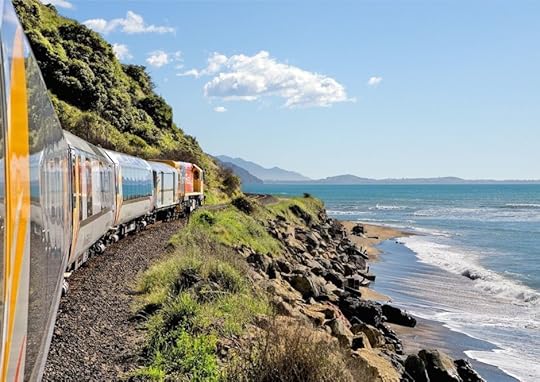
1
Photo: The Great Journeys of New Zealand, Coastal Pacific

2
Photo: The Great Journeys of New Zealand, Coastal Pacific

3
Photo: The Great Journeys of New Zealand, Coastal Pacific
Intermission
Travel
The 25 coolest towns in America: 2018
Matador Team
Sep 25, 2018
News
Attention female photographers: Sony wants to give you a $25,000 grant and free gear
Eben Diskin
Sep 21, 2018
News
Attention female photographers: Sony wants to give you a $25,000 grant and free gear
Eben Diskin
Sep 21, 2018
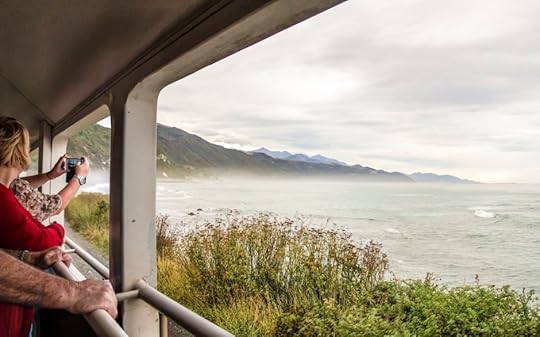
4
Photo: The Great Journeys of New Zealand, Coastal Pacific

5
Photo: The Great Journeys of New Zealand, Coastal Pacific

6
Photo: The Great Journeys of New Zealand, Coastal Pacific
As you move along the Kaikōura Coastline, you’ll be able to snapshots of marine mammals from the train and even have the opportunity to do some whale watching, before moving into the Canterbury Plains and eventually back to Christchurch. The train cars feature large windows on both sides to take in the Pacific Ocean as well as the lush countryside, and diners have the option to purchase meals to enjoy onboard. Open-air viewing carriages are also available.
If you’re stoked about an epic train voyage this winter, get on the booking process as soon as possible. The Coastal Pacific will run daily from December 1 through late April 2019, weather permitting, with Christmas Day being the only day on the schedule sans service. Tickets for adults start at just over $100 USD with tickets for kids running about $72. 
More like this: The Montenegro Express is the ultimate fall train route through Europe
The post The Coastal Pacific Railway in New Zealand is reopening, and it’s stunning appeared first on Matador Network.

What to do on Istanbul's Asian side
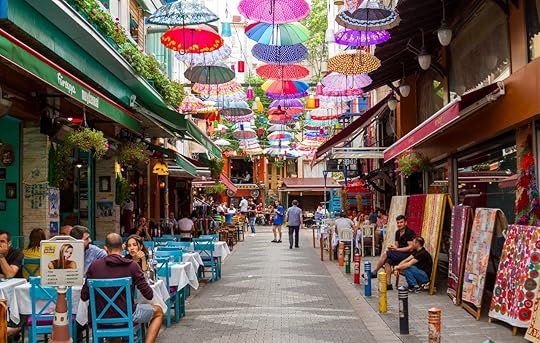
Given its geographical position straddling both Europe and Asia, Istanbul is a melting pot of Eastern and Western civilizations. The famous Bosphorus Strait divides this culturally rich city into an Asian side and European side, both full of deep-rooted diversity. Many first-timers stay near Sultanahmet on the European side in order to see all the tourist-favorite sites, such as Topkapi Palace, Basilica Cistern, and the Museum of Turkish and Islamic Arts. But there’s much to discover on the other side of the city. Here’s how to get away from the central tourist area and take in the underrated Asian side of Istanbul.
Explore like a local in Kadıköy.
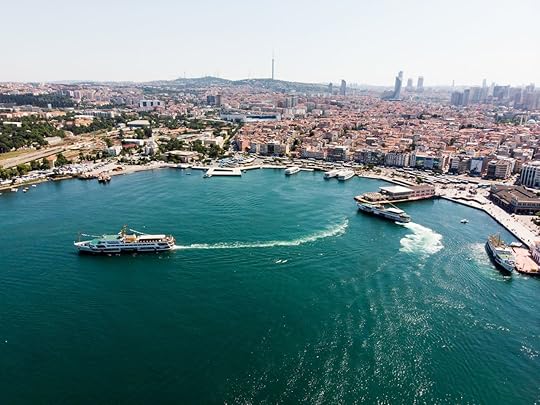
Photo: Alp Aksoy/Shutterstock
Start your journey by visiting the neighborhoods of Kadıköy and Moda first. There are ferries to Kadıköy departing from different piers, such as Kabatas, Eminonu, and Besiktas. While watching the city from the water, do not skip the pleasure of having a cup of Turkish tea with simit, a round, sesame-coated bread that is a very popular Turkish street snack. As soon as you get off the ferry and find yourself in Kadıköy, you’ll be welcomed by a less chaotic and a more peaceful atmosphere with car-free streets — a perfect place to do some shopping and exploring at the many souvenir shops, restaurants, bookstores, and pastry shops.
As you walk along the streets, you’ll notice that just like many other districts of Istanbul, Kadıkoy is all about contrasts. The large district is a good example of how nostalgia and modernity can co-exist. The root of this beautiful coexistence dates back to ancient times when Kadıköy was first known as Chalcedon. The first settlements in Chalcedon were built by the Greeks around 685 BC, and people from different backgrounds and cultures — including Greeks, Turks, Armenians, and Jews — lived here together under the rule of the Ottoman Empire. This historical and cultural diversity has enriched Turkish culture and cuisine into the vibrant and varied destination it is today.
Meet up at the bull statue.

Photo: Lepneva Irina/Shutterstock
Kadıkoy’s bull statue, located in the center of an intersection, is one of the most famous landmarks of the Asian side of Istanbul. The statue was created by French sculptor Isidore Bonheur in 1864, and it was originally erected in Alsace-Lorraine before being seized by the Germans, who were allied with the Ottomans during WWI. As a symbol of appreciation, the statue was given as a gift to the Ottoman commander Ismail Enver Pasha in 1917. In 1955, the statue was placed in the courtyard of the Istanbul Hilton Hotel. Finally, in 1990, the bull statue was moved to its current location, Altıyol. Since then, this beautiful piece of art has been a meeting place for both locals and tourists.
Enjoy a Turkish breakfast in the Moda neighborhood.

Photo: Moda Van Kahvaltı
Cemal Süreya, one of the most famous Turkish poets, once said, “I don’t know what you think of eating, but breakfast must have something to do with happiness.” Perhaps it was the rich Turkish breakfast that made him say these very words. Breakfast is very important in Turkish culture, especially on weekends, and it’s tradition for locals to have a long breakfast to wipe out the tiredness of hectic weekdays. Traditional Turkish breakfast includes fresh tomatoes, cucumbers, olives, different kinds of cheese, eggs, jams, honey, and a clotted cream known as kaymak, along with tea and fruit juice.
In the Moda neighborhood, there are many places where you can experience and enjoy traditional Turkish breakfast. Moda Van Kahvaltı is the preferred breakfast spot of both locals and tourists. It serves delicious, fresh breakfasts built from ingredients imported from the eastern Turkish city of Van. The dish to try is menemen, a traditional Turkish dish made with eggs, tomatoes, onions, green peppers, and spices.
Get third-wave with your coffee.

Photo: Cherrybean Coffees/Facebook
The word for breakfast, kahvaltı, translates to “before coffee” in Turkish. No matter how much you eat for breakfast, you should not leave Moda without having a cup of Turkish coffee. But instead of visiting the often-touristy “traditional” shops, complete with gilded saucers, try one of the trendy third-wave coffee shops where proprietors take great care in each and every coffee-making process, from harvesting to brewing. One of the best places to hit is Walter’s Coffee Roastery, a Breaking Bad-inspired shop that focuses on the chemistry of coffee and lets customers wear the hazmat suit and the gas mask that are on display. But it’s not all gimmicks; the coffee is the best in town, and the coffee shop also makes the yummiest pancakes ever. Another lovely spot is Cherrybean Coffee, which has a cozy interior design that’ll draw you in from the street and make you crave a homemade muffin to enjoy with your coffee. Pick a book from the bookshelves and enjoy the laid-back atmosphere. The hot chocolate is also a must-try.
Drown yourself in Turkish cuisine.

Photo: Hayati Kayhan/Shutterstock
The Asian side of Istanbul has just as much incredible food as the European side, from traditional Turkish cuisine to quirky dishes from innovative restaurateurs. One of the best places to get schooled on the classics is Ciya Restaurant in Kadıköy. It specializes in cooking almost entirely traditional dishes from Turkey, such as lahmacun, kebabs, soups, mezzes, and many more. This kind of meal deserves a sweet ending, so do yourself a favor and try the Ciya pumpkin dessert. The restaurant is usually busy, and finding a table is a challenge at times, so show up during off-peak hours if you can.
Otantik Anadolu Yemekleri in Beyoğlu is another noteworthy restaurant to visit. This restaurant’s name actually sums it all up for you — Otantik Anadolu Yemekleri means “authentic Anatolian dishes.” Gözleme, Turkish pancakes, are its specialty. Gözleme is typically a flatbread stuffed with your choice of ground lamb, spinach, potatoes, or feta cheese. This simple yet filling food is often served with a traditional drink called ayran, a yogurt-based beverage that is slightly salty. As healthy as it is, it’s an acquired taste that’s not often a favorite among tourists.

Photo: Beppe Pizzeria Moda/Facebook
If you’re dying for a slice of pizza, Beppe in Kadıköy is a comfy and warm pizzeria that will make you feel like you’re home with friends or family. This small eatery has a special section on the menu labeled “Extraordinary Pizzas,” which features unusual toppings to suit every preference, from frog legs to eel and wasabi to smoked duck breasts. It also serves delectable local wines from Turkish vineyards.
Don’t you dare leave Istanbul without stopping at Meshur Dondurmacı Ali Usta, an incredibly popular ice cream shop in Kadıköy that people don’t mind waiting in line for. Turkish mastic ice cream, called dondurma, is a bit stickier than the creamy version Americans are accustomed to, but you’re sure to find something you like in the selection of about 30 flavors, such as pistachio and Turkish coffee.
Get out on the town.
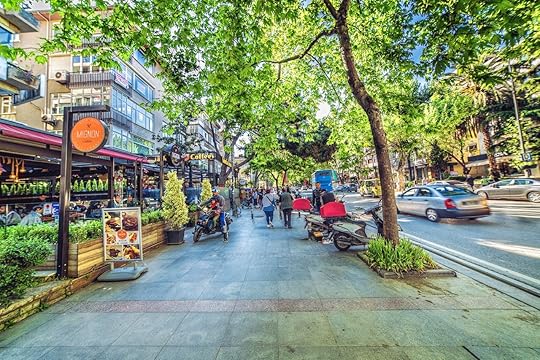
Photo: Lepneva Irina/Shutterstock
For shoppers, Antique Street and Bagdat Avenue are the places to be in Kadikoy. Antique Street, rarely called by its real name of Tellalzade Street, is a sanctuary for antique lovers. Seeing all those types of antique furniture, old electronics, secondhand goods, and clothing will make you feel as if you’re a sneaky time traveler. Bagdat Avenue is the Champs-Élysées of Istanbul and one of the longest high streets in the world. This is where all the luxury brands — Chanel, Louis Vuitton, Zara, Mango — can be found. Bagdat is so well known that people simply call it “the street” or cadde in Turkish. While the culture here is lacking, walking down the extra-wide sidewalks under the shadow of trees can make for an enjoyable afternoon.
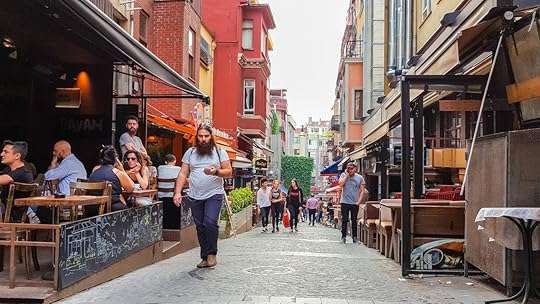
Photo: Ipek Morel/Shutterstock
The nightlife has been very vibrant in Kadıkoy since the 1990s, and Kadıkoy Bar Street — originally known as Kadife Sokak — is a very important part of the culture on Istanbul’s Asian side. There are plenty of options for every nightlife taste, from cocktail bars to casual pubs to live-music joints. Three of the best are Karga, Aylak Pub, and Buddha Bar — each offering a cozy ambience, a rich selection of affordable drinks, and often times live music.
Lastly, one of the most popular activities to do on the Asian side of Istanbul is take a long walk along the Caddebostan coastline with a cup of coffee in hand. You could also rent a bike or sit on the grass and enjoy the full scenery of the Prince Islands in the distance. On the weekends, it’s very busy as large and small groups of people get together to share a few beer and snacks.
Spend a day on the Prince Islands.

Photo: Nejdet Duzen/Shutterstock
During your visit to Istanbul, you should definitely make a day trip to the Prince Islands. This heavenly district consists of nine islands served by ferries and sea buses operating regularly throughout the day — and there are many more transportation options on the Asian side than on the European side. Buyukada, Heybeliada, Burgazada, and Kinaliada are the four most famous islands, or adalar in Turkish. Being the largest, Buyukada is notably the most tourist-friendly. Be sure to visit the boutique patisseries of Buyukada and sample from the huge variety of pastries. Buyukada and all other islands have small streets lined with amazing mansions and surrounded by picturesque scenery. At the highest point of Buyukada, you’ll come across a small church called Aya Yorgi. If you make it to the top, the view is simply breathtaking. 

More like this: The 7 most overlooked destinations in Southeast Asia you need to visit
The post Everything you need to do in Istanbul’s underrated Asian side appeared first on Matador Network.

Where to spend this Thanksgiving

The busiest travel day of the year in the US is the Wednesday before Thanksgiving, although most of the journeying is done by car to gather with family. Visiting somewhere exciting and new isn’t usually the plan. In these charged social times, however, getting out of town — whether to discover a new city, relax on a beautiful beach, or catch some early-season skiing — is probably a better way to recharge than getting into a political discussion around a turkey. Or maybe you and the in-laws are getting along fine — so well, in fact, that you’re happy to bring them with you, but you just want to do it somewhere that isn’t the suburbs. Here are the best places to visit this Thanksgiving break.
1. Whistler, Canada

Photo: robcocquyt/Shutterstock
The mountain peaks of Whistler, British Columbia, are already snow-covered, and the resort is scheduled to open on Thanksgiving Day this year. Whistler Blackcomb, the biggest ski area in North America, is so expansive that even when there’s no snow in the lower elevations, gondolas will get you to mid-mountain from where you can access endless acres of incredible skiing in the upper portion of the Whistler and Blackcomb Mountains. Down in Whistler Village, the dining and drinking scene is so good that people actually day-trip up from Vancouver for it. Plus, round-trip airfare from most US cities is still under $500.
Canadians had their Thanksgiving in early October, so you won’t find Turkey Day menus in the restaurants. If you stay in a condo or rental with a kitchen, though, IGA or Nesters supermarkets will have all the ingredients you need to make an autumn feast at home. Or you can skip it and enjoy fondue at Basalt Wine and Salumeria or a steak a la Fiorentina at Il Caminetto. By day, non-skiers ice skate, work out, play squash, or swim at the Meadow Park Sports Centre; cycle through miles of valley trails; or contemplate art at the Audain Art Museum and a handful of galleries. Shoppers will also enjoy perusing the Whistler Village shops without the crush of Black Friday bargain hunters they’d face south of the border — but oftentimes with some of the same deals.
2. Carmel-by-the-Sea, California

Photo: Lynn Yeh/Shutterstock
This postcard-perfect village overlooking California’s Carmel Bay gets hardly any rain in November, so the days are cool and dry. Ocean Avenue — the tree-lined main street with its tiny shops, restaurants, and galleries — takes you down to the cliffs overlooking a lovely, tree-framed beach cove. You can walk down to the sand or stay up high to look out for the dolphins and, in November, humpback and blue whales.
To see more sea life up close, drive six miles north across the Monterey Peninsula to the Monterey Bay Aquarium, the best of its kind in North America. You could also opt to drive around the peninsula on the famed 17 Mile Drive, a stunning trip past the Pebble Beach Golf Course, windswept beaches, stately homes, and the area’s graceful Monterey pines. Keep driving north and in under an hour you’re in Santa Cruz, home to some of the best surfing in the US and the Santa Cruz Beach Boardwalk. Drive south and in the same amount of time you’ll reach the imposing cliffs of Big Sur where Highway 1 is finally open after a 14-month closure. You can hike in Big Sur or in the coastal hills behind Carmel. Alternatively, drive over those coastal hills and in twenty minutes you’ll be in warm and dry Carmel Valley — where you can sample award-winning Chardonnays and Pinot Noirs at some of the area’s dozen-plus wineries.
3. Nosara, Costa Rica

Photo: Colin D. Young/Shutterstock
Late November is the start of Costa Rica’s dry season, and it’s also when restaurants and shops in Nosara reopen after a quiet spell. Nosara is on the Guanacaste Peninsula, one of the drier regions in Costa Rica, so even if the rains are continuing elsewhere in the country, sunshine is a good bet here. This town, pressed between lush mountains and a four-mile-long beach, is a perfect base for surf lessons, horse riding, zip-lining, fishing, and just enjoying the wildlife around town –- from the howler monkeys in the trees to the purple crabs crossing the path to the beach.
Just north of town, Ostional Beach is where Olive Ridley turtles come to lay their eggs a week before each new moon. The moon phase won’t line up for that this Thanksgiving break, but in the evening, you might catch the hatchlings from a previous laying scampering towards the sea. In fact, the nature reserve extends to the beach in front of Nosara, as well, so you’ll see no development right behind the sand — just trees. Surfers will appreciate the better fall surf conditions, and non-surfers will enjoy walking on the endless beach or sitting by the pool at the Harmony Hotel, should they opt to stay there. Nosara seems to have new restaurants every year, but with its dirt roads and jungle surroundings, the town is still an awesomely low-key getaway. Nosara has a sizeable expat US community, and restaurants like Marlin Bill’s and the Beach Dog Cafe cook up a hearty Thanksgiving dinner.
4. Curação
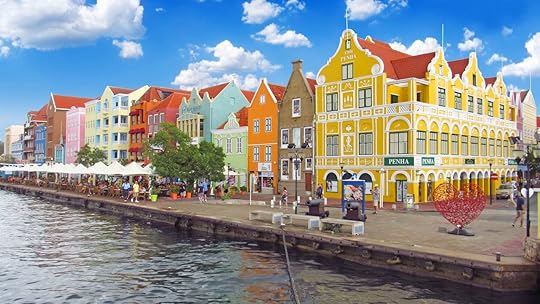
Photo: SirimasB/Shutterstock
The Caribbean hurricane season tends to wrap up by the end of November, so chances are good that your island getaway will be sunny and dry. To up your chances, fly to an island outside the main hurricane zone. We suggest the tiny Dutch Caribbean island of Curação, just north of the South American continent, with its white-sand coves and colorful capital Willemstad, which looks exactly like you’d think Amsterdam would look like if you picked it up and moved it to the tropics.
Most locals speak the lyrical Portuguese creole language of Papiamento, but you’ll hear English and Dutch, as well. Blauwbaai, or Blue Bay, is the best place for diving and snorkelling. Other great spots include Directors Bay, a quiet beach so named for Shell Oil executives who once owned it for themselves. A must is the two-hour hike up to the top of the 1,230-foot Mount Christoffel. Bring lots of water or, better yet, a picnic and savor the panoramic vista. For dinner, be sure to try Curação’s incredible cuisine, which is some of the most interesting in the Caribbean as it combines Dutch, Indonesian, and African influences. Start dinner with a cocktail made with the island’s eponymous blue liquor.
5. The Big Island, Hawaii

Photo: Marc Turcan/Shutterstock
If you’re on the West Coast, Hawaii is an easier holiday getaway than the Caribbean, but places like Kauai are pretty rainy in November. Fly to the Big Island and you’re almost guaranteed sunshine, especially on the west side near the Kona coast. Tourism on the island suffered a big slump with the Kilauea Volcano last spring, but the lava flow did not affect the areas you’re likely to be in. Bringing your tourism dollars to the Big Island this November would be a welcome show of Thanksgiving gratitude.
If you’re traveling with relatives in tow, they’ll appreciate the amenities and options — like golf, tennis, and fancy spas — at some of the beach resorts along the Kona-Kohala coast. If you’re traveling in a smaller group, you can explore other parts of the island, like the cowboy country area of Waimea, which is upcountry from the coast and has an excellent farmers market and several farm-to-table restaurants. You can also drive up to the 9,200-foot Visitor Center at Mauna Kea for its stargazing program (check the website to be sure it’s happening that night). Best yet, drive around the island to Hilo on the east side, one of the most authentically Hawaiian cities in all of the islands, and stop for some Hilo’s homemade ice cream (you’ll find it using Google Maps). After that, continue on to Hawai‘i Volcanoes National Park, which reopened in September.
6. Austin, Texas

Photo: Mike Holp/Shutterstock
If you’re into live music, there aren’t many better ways to spend your Thanksgiving break than a few days in Austin. The town has more live music venues than pretty much anywhere else in North America. Plus, November is one a great time to visit. The summer heat is gone, yet high temperatures can still reach 70 degrees.
Although Austin houses the Texas Legislature, the state government of a red state, it’s also the home of the University of Texas’s largest campus and is one of the most liberal cities in the state. Here, people of both political stripes live side by side and make it work. That’s probably because life in this city surrounded by waterways is really nice. Besides killer live music and nightlife scenes, Austin’s outdoor activities are endless. You can take a paddle boat on Zilker Metropolitan Park, hike or mountain bike in the Barton Creek Greenbelt, or rock climb at the pink-hued Enchanted Rock.
With Austin’s excellent restaurants, you won’t have a problem finding a place to have the Thanksgiving feast itself. And we’re not sure if Thanksgiving brunch is a Texas thing — but pretty much every place starts serving it in the late morning. The Second Bar + Kitchen’s turkey dinner will start at 11:00 AM and offers up such southwestern flavors as jalapeño creamed corn and sweet potato biscuits.
7. Charlottesville, Virginia

Photo: Melinda Fawver/Shutterstock
Charlottesville is best known as the home of the University of Virginia, one of the nation’s most prestigious public universities and the only US school founded by a president, in this case Thomas Jefferson. UVA is also one of the country’s most beautiful college campuses. One highlight of a campus tour is seeing the much-coveted single rooms that ring the central campus lawn — including 13 West Range, preserved as it was when it housed Edgar Allen Poe. After UVA, drive out for a visit at Monticello, the plantation mansion owned by Jefferson himself. Both the plantation and UVA are now UNESCO World Heritage Sites.
The Monticello Wine Trail has nearly three dozen vineyards while the Brew Ridge Trail is the place to savor suds from the area’s excellent small-batch breweries. Back downtown in Charlottesville, Main Street is a brick-lined, pedestrian-only walking area with cool shops like Telegraph Art & Comics and Blue Whale Books. Less than an hour away you’ll find Shenandoah National Park where you can hike a portion of the Appalachian Trail.
8. Lisbon, Portugal
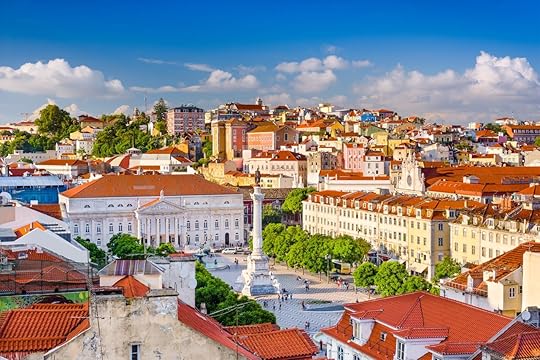
Photo: ESB Professional/Shutterstock
This hilly waterfront city is one of the warmest European capitals in November. Athens might be hotter, but Lisbon is the continent’s western edge, so it’s much closer for a quick jaunt. Plus, a handful of airlines are still offering under-$600 round-trip fares from New York over the T-giving break. Once in Lisbon, you could spend endless hours just walking its picturesque and often narrow lanes. Be sure to use trams when needed to ascend the incredibly steep streets.
Bairro Alto means tall neighborhood. There, the cobblestone streets and buildings dating to the early 1500s are the center for Portugal’s soulful fado singing, which you should definitely check out at night. Also up high is Alfama, another ancient area full of restaurants. At the top of the Alfama, the 11th-century Castle of St. George looks exactly like you’d expect a Medieval fortress to look and is the perfect place to gaze out onto this magical city and the water beyond. If you’re as impressed by the ornate tiles decorating Lisbon’s apartments and shops as you should be, stop by the National Azulejo Museum (azulejo means tile in Portuguese) where you’ll see amazing examples of this unique North African and Iberian art. Also, be sure to visit the Torre de Belem on the Tagus strait to get a feel for the waterfront. Or skip the Torre and drive out to the Cascais beach. In November, the waves will be pumping, and the area’s hardcore surfers will be fun to watch.
9. Boston, Massachusetts
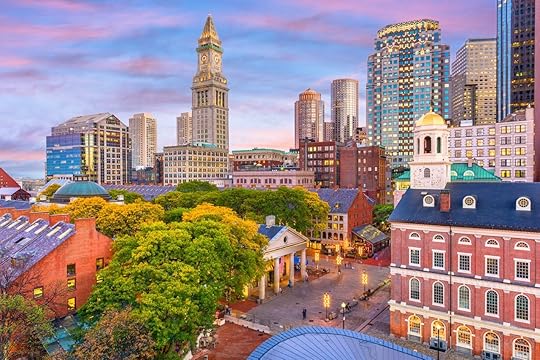
Photo: Sean Pavone/Shutterstock
The Thanksgiving escapes we’ve suggested are just that: escapes. We’ve told you where to find warmer weather and where to explore outside the country. But if you believe, as we do, that Thanksgiving is a really cool holiday, this might be the year you want to embrace everything it’s about. If so, head to Boston, which is right next to the birthplace of Thanksgiving. A 45-minute train ride south gets you to Plymouth, where the Pilgrims landed in 1620 and celebrated their first Thanksgiving a year later. It’s borderline cheesy, but you can get on a reproduction of the Mayflower and watch actors reenact the first Thanksgiving in a recreated settlement there.
Even if you skip Plymouth, Boston is just about as historic and quintessential a New England city as you can find — and the Thanksgiving weekend options are boundless. Beyond its handsome college campuses and world-class museums, like the Institute of Contemporary Art and the Harvard Museum of Natural History, Boston is full of exactly the kinds of activities you should be doing in late fall. The concert and theater season is on, and you can actually buy tickets to Hamilton for under $250 apiece. You can watch a game at TD Gardens, see the holiday lights at the Faneuil Hall Marketplace, or peruse the shops in Back Bay. And with over 75 restaurants open on Thanksgiving Day, you’ll have somewhere special to enjoy the main event itself. 

More like this: The best places to travel in November
The post Where to go this Thanksgiving instead of going home appeared first on Matador Network.

Flight bans passenger with squirrel

For many, a squirrel climbing up their body would create a significant amount of anxiety, but not for this woman on a Frontier Airlines flight. We’ve heard of emotional support peacocks before, but Tuesday evening was the first time a passenger tried to bring a squirrel on board, and yes, it went exactly how you’d expect.
Although Cindy Torok indicated in her reservation that she would be bringing an emotional support animal on board, she never mentioned that it was a squirrel. Since the airline doesn’t allow rodents — only dogs and cats — she was asked to leave the plane. She refused, police were called, and everyone was forced to deplane. Once Torok was removed, the flight from Orlando to Cleveland resumed as scheduled.
Torok told Fox 8 News Cleveland that she got the squirrel to help with her anxiety in crowds. According to her, she told flight attendants, “You’re not taking my squirrel. Sorry, you’re not. I refuse. You will not take my baby from me.” She added that she was “treated very poorly” and “called a liar by one of the stewardesses.” Frontier reimbursed Torok and gave her a voucher for another flight.
Torok is not just a “squirrel person,” however. She also owns lizards and bearded dragons, which she thankfully did not try to bring aboard.
While TSA screens animals and may let them through security, it’s up to the airline to determine if a particular animal is actually permitted on the flight. Recently, airlines have been cracking down on what is considered an acceptable emotional support animal as fliers have been bringing increasingly ridiculous pets aboard, including turkeys, sugar gliders, snakes, spiders, and more. Now, we can add squirrels to the list. 
H/T: Fox News

More like this: Everything you need to know about your rights for flying with pets
The post ‘Emotional support’ squirrel gets passenger kicked off Frontier Airlines flight appeared first on Matador Network.

Traveler's diarrhea vaccine research

If there’s one thing that can knock even the most seasoned adventurers out of commission while traveling, it’s getting sick. Especially when it comes to traveling to less-developed areas of the world or into environments where standards of hygiene are subpar and getting a seriously upset stomach is a very real possibility. The most common travel-related illness is traveler’s diarrhea, and it can last anywhere from three to seven days — more than enough time to ruin your trip.
Until now, there has been no vaccine for traveler’s diarrhea and therefore no way to prevent its onset. Right now, all you can do is watch what you eat abroad and pray you don’t get sick. New research published by Professor Mario Monteiro at the University of Guelph, however, may be the biggest step yet toward a vaccine that fully prevents traveler’s diarrhea.
Recently published in the journal Vaccine, his research revolves around a conjugate vaccine, which blends proteins from E. coli with sugars from Shigella and Campylobacter jejuni. All three pathogens are huge causes of bacterial diarrhea across the world. The ability to defend against them would be a revolutionary medical development, especially as the same pathogens are also responsible for the deaths of over 100,000 children under age five each year. So far, testing of the vaccine has been encouraging. In tests with mice, it successfully provided immunity against all three pathogens.
While previous vaccines have been designed to fight bacterial diarrhea, those only targeted a single pathogen instead of all three. Monteiro himself developed a sugar-based vaccine back in 2009, but it only fought Campylobacter jejuni. He hopes his new three-in-one approach will ultimately lead to the most successful vaccine to date.
While progress thus far has been encouraging, further research is still needed to determine the exact composition of the vaccine to ensure maximum efficiency. Monteiro’s new three-in-one method has been patented by the University of Guelph and the United States Naval Medical Research Center. 

More like this: These are the travel vaccines you actually need, according to an expedition doctor
The post New research may finally lead to a vaccine for traveler’s diarrhea appeared first on Matador Network.

Most difficult visas for US citizens

With visa-free access to 164 countries (out of the 195 total countries in our world today), the United States ties with 11 other countries for providing its citizens with the second most powerful passport in the world. In comparison, citizens of Pakistan, Iraq, and Afghanistan can respectively only visit eight, seven, and five countries without needing to apply for a visa — their passports offering the least amount of freedom of movement.
Despite the immense freedom given to US passport holders, some remote places and strictly governed countries remain out of reach to Americans — and, sometimes, all the more alluring because of it. The following nine destinations require travel visas that are among the hardest in the world for US passport holders to obtain — ranked from major headache to basically impossible.
9. China

Photo: aphotostory/Shutterstock
Citizens of the US are required to obtain a visa before arriving in China, though according to the Chinese Embassy, “A visa is not a guarantee to enter China.” Mail-in service is not available, so Americans have to apply for a Chinese visa at a Chinese Embassy or Consulate General. The process can be lengthy and tedious — you have to list out your “major family members” and answer four pages of questions — but somehow, about 6,000 Americans per day manage to find a way to land in The People’s Republic of China, so take heart: It can be done. Along with your visa application, you’ll need to submit supporting documents like an invitation letter issued by a valid entity in China, proof that you’ve booked round-trip airfare, and your hotel reservation confirmation. Keep in mind that several celebs have been turned down visas due to openly supporting Taiwan’s sovereignty or otherwise offending China in some fashion.
8. India

Photo: SasinTipchai/Shutterstock
US citizens must apply for an electronic travel authorization if they want the chance to be issued an Indian visa upon arrival. Otherwise, Americans will need to apply for a tourist visa at an Indian embassy or consulate. According to the Government of India, “The duly signed physical copy of the application form, completed in all respect and submitted successfully, is to be submitted at the concerned Indian Visa Application Center (IVAC) or directly to Indian Mission/Post on the scheduled date of interview along with the requisite supporting documents.” You may be refused entry if you don’t have the right type of visa, so do your research and make sure you apply for the visa most applicable to your trip.
7. Turkmenistan

Photo: Borkowska Trippin/Shutterstock
Scoring a tourist visa to Turkmenistan is impossible unless you book an organized tour with a guide who will be with you at all times during your visit. Applying for a transit visa is a workaround that allows you to visit Turkmenistan without visa support from a tour company, but it only gives you three to seven days in the country (during which you should totally check out the famous gas crater in the village of Darvaza nicknamed “The Door to Hell”). If you want to stay longer and visit on a tourist visa, you’ll need a letter of invitation certified by the Government of Turkmenistan.
According to the US Department of State, “The person or organization inviting you must submit a request to the State Migration Service (SMS), along with a copy of your passport ID page.” This process alone tends to take around 15 business days. Then, “After receiving the letter of invitation, [you can] apply for a visa at the Embassy of Turkmenistan in Washington DC or at the airport in Ashgabat upon arrival.”
6. Russia

Photo: Reidl/Shutterstock
In order to enter Russia and check out its gorgeous churches, American citizens must have both a valid US passport and a visa issued by a Russian Embassy or Consulate. To acquire a visa, the laws of Russia dictate that every foreign traveler must have a legal “sponsor” based in Russia — this could be a tour company, relative, hotel, employer, university, or something along those lines. You’ll need to apply in person at a Russian consulate or visa processing center, and visas are only issued when a traveler can present an appropriate invitation from a Russian source. If traveling independently, note that the hostel/hotel you book will provide you with one when asked.
Don’t think you’ll just figure out the visa scenario when you arrive. According to the US Embassy, “It is impossible to obtain an entry visa upon arrival, so travelers must apply for their visas well in advance… Travelers who arrive in Russia without an entry visa will not be permitted to enter the country, and face immediate return to the point of embarkation at their own expense.” Applying is a lengthy process, so begin several months ahead of when you hope to travel. The process may be complicated, but over 200,000 Americans visited Russia in 2017, so it’s far from impossible.
5. Saudi Arabia

Photo: Osama Ahmed Mansour/Shutterstock
Though the country recently relaxed its tourist visa laws in order to encourage more travelers to come, attracting non-religious visitors is still not necessarily a priority for Saudi Arabia; the country is supported by religious tourism, welcoming millions of Muslims per year who are making Hajj, the pilgrimage to Saudi Arabia’s Mecca.
To visit Saudi Arabia and get to see its beautiful Petra-like sandstone monuments, all travelers (except citizens of Bahrain, Kuwait, Oman, Qatar, and United Arab Emirates) must have a visa, and getting a visa requires getting a sponsor, proven in the form of an invitation letter. Regulations are especially strict for women, and they should wear a head covering in any photos sent in with their application. According to Worldwide Visa Bureau, “Due to the strict requirements of Saudi Arabia, women entering the Kingdom alone must be met by a sponsor or male relative and have confirmed accommodation for the duration of their stay.”
In addition, “Entry may be refused to any visitor judged as behaving indecently, according to Saudi Arabia law and tradition.” Saudi Arabian tradition is much stricter than what many Americans are used to; for example, couples traveling together are expected to be married. Make sure to do your research to avoid any accidental missteps. Another unexpected roadblock to entry in Saudi Arabia: any sign that you’ve visited Israel (such as a stamp in your passport).
4. Iran

Photo: Michal Knitl/Shutterstock
According to the US Department of State, US citizens “must obtain valid visas from the Iranian Interests Section at the Embassy of Pakistan in Washington, DC, or at an Iranian diplomatic mission in a third country.” US citizens cannot visit Iran (and its beautiful mosques) without pre-arranging a tour or private guide, or having a friend or relative in Iran take legal responsibility for them. Even after all that, “Possession of a valid Iranian visa will not guarantee entry into the country.”
Iran is another country that does not grant entry to anyone who has visited Israel. In fact, Iran officials sometimes even deny entry to travelers who have stamps from Jordan or Egypt, as these countries are easy to access from Israel and alert border control agents that you may have visited.
Traveling to Iran is riskiest for Iranian-Americans. The government of Iran considers US-Iranian dual nationals to be Iranian citizens alone, as it does not recognize dual nationality; moreover, “acquiring” Iranian nationality can be sprung upon US citizens who do not even have an Iranian passport, such as someone born to an Iranian father or who marries an Iranian man. Authorities may then detain Iranian-Americans at will on accusations of spying or posing a threat to national security.
3. Nigeria
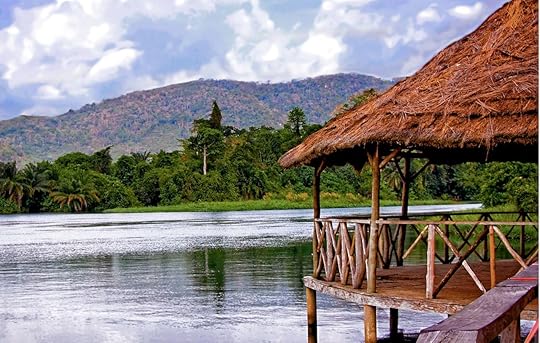
Photo: Nataly Reinch/Shutterstock
Applying for a tourist visa to visit Nigeria is a long and complicated process. In addition to the lengthy visa application and confirmation of online payment (which must be made via money order), the Nigerian Embassy requires hopeful travelers to submit the following:
Letter of invitation from a host accepting full immigration responsibility
Data page of host passport
Confirmed hotel reservation if the applicant is not staying with host
Evidence of funds to cover stay in Nigeria (letter from the bank, etc.)
American passport holders also face a nonrefundable $180 fee to apply for a visa, so make sure that sufficient funds clause won’t be a problem after all is said and done.
2. Chad

Photo: evgenii mitroshin/Shutterstock
To visit Chad, you must secure a visa in advance; visas are not available upon arrival. Securing a visa requires extra steps like booking your travel arrangements ahead of time and getting the yellow fever vaccine — to say nothing of headache-inducing formalities like needing two blank pages that face each other in your passport in order for your visa to be approved. The country also places currency restrictions on visitors: amounts over 5 million CFA ($10,800) have to be declared. And unless you work through a certified travel agency, you’ll have to pay a visit to the Embassy of the Republic of Chad in Washington, DC, in order to apply for a visa.
Passport Health USA lists the following required documents in order to begin the Chadian visa application process:
Valid passport
Passport photos that meet the Embassy of the Republic of Chad’s requirements
Proof of travel arrangements
Proof of the yellow fever vaccine
Properly completed Chad visa application form
Money order
You may also need an invitation letter or business introduction letter depending on the purpose of your trip. Within 72 hours of your arrival, first-time visitors will need to check in with Chad’s National Police force for a registration stamp.
1. North Korea

Photo: Torsten Pursche/Shutterstock
As of August 31, 2018, there is a Level Four advisory (“do not travel”) issued to Americans regarding potential travel to the Democratic People’s Republic of Korea. In the words of the US government, “Due to the serious risk of arrest and long-term detention of US nationals[,] individuals cannot use a US passport to travel to, in, or through North Korea without a special validation from the Department of State. Special validations are granted only in very limited circumstances.” Essentially, special validation permissions are given only to those whose visit would be “in the national interest,” such as reporters, journalists, and those on Red Cross missions.
That said, you may want to rethink visiting even if you manage to find a way: The US government cannot provide emergency services to American citizens in North Korea because it does not currently have diplomatic relations with the DPRK. And if you manage to secure a Special Validation Passport and do decide to take the trip, the Department of State advises drafting a will before you depart. 

More like this: 4 ways your passport can keep you from traveling that you never knew of
The post The 9 most difficult travel visas for Americans to obtain appeared first on Matador Network.

Matador Network's Blog
- Matador Network's profile
- 6 followers



